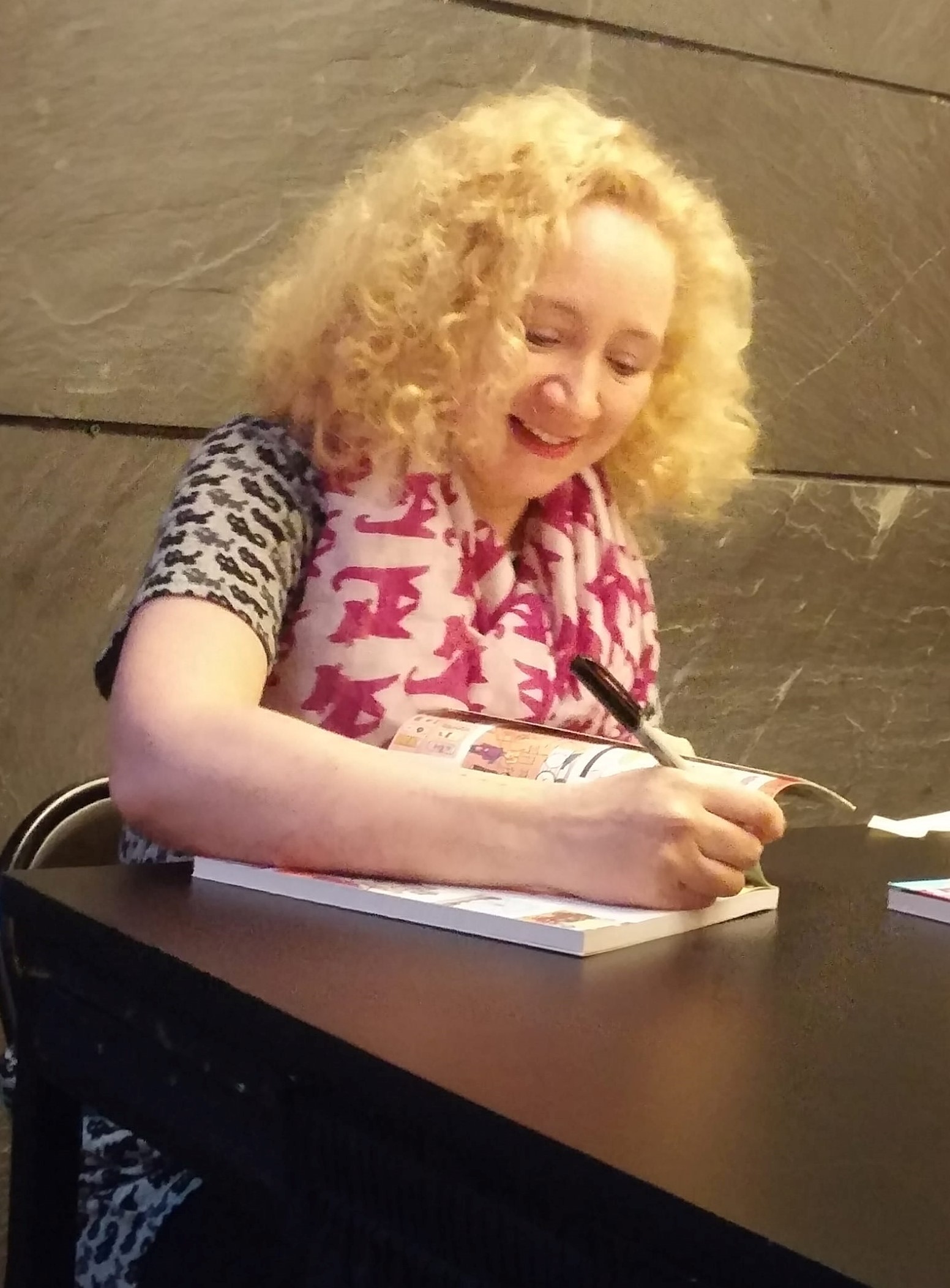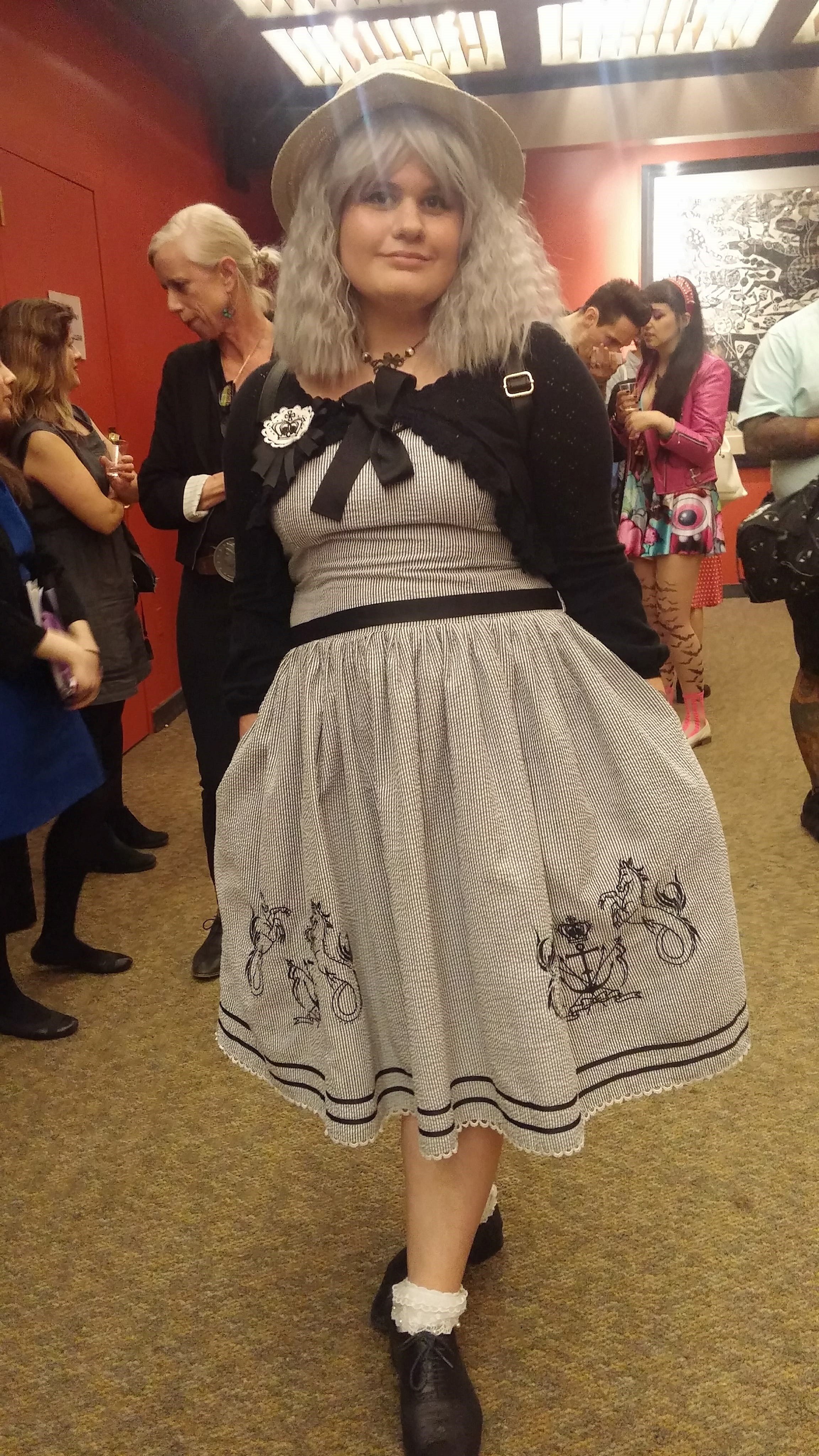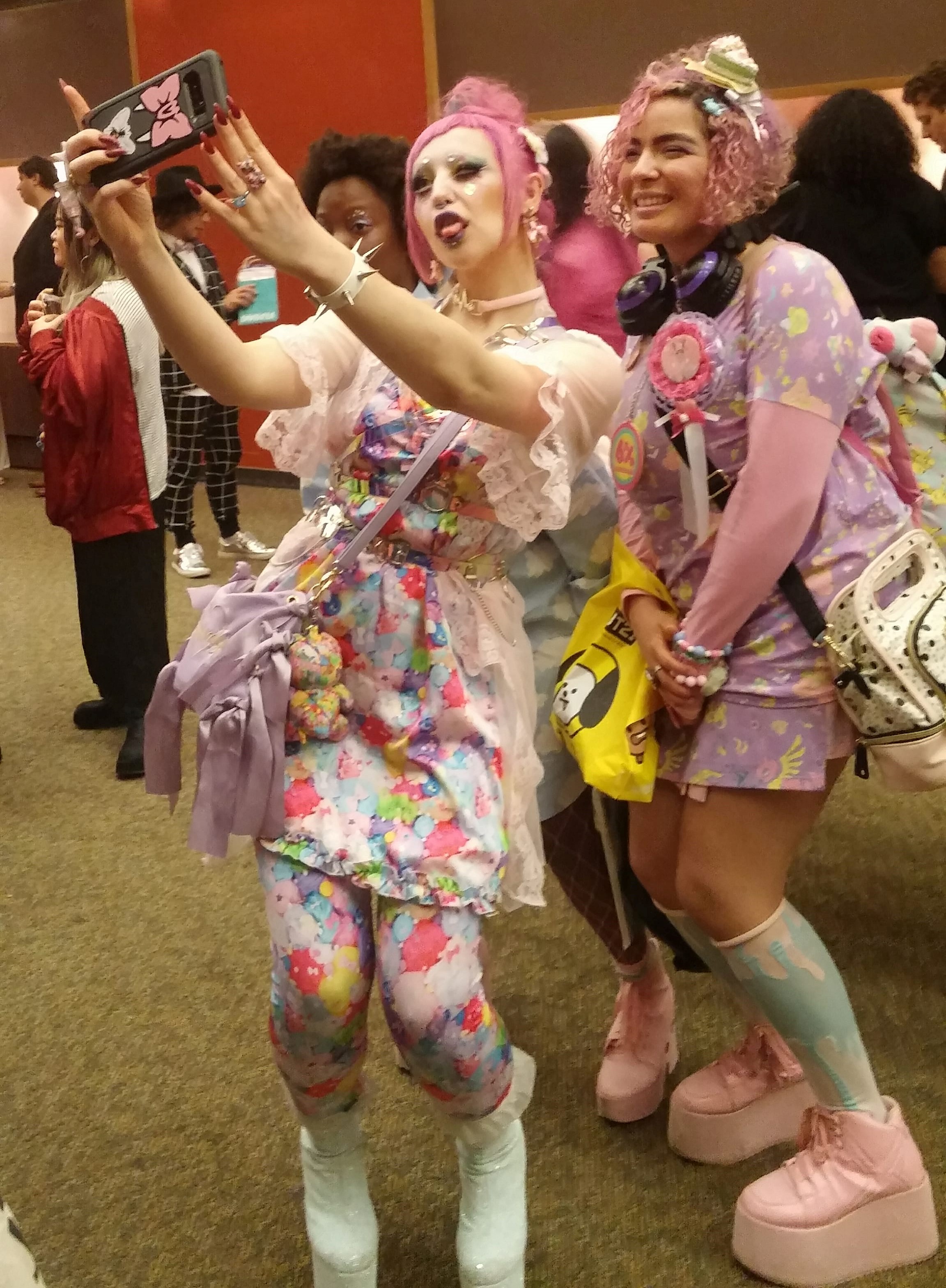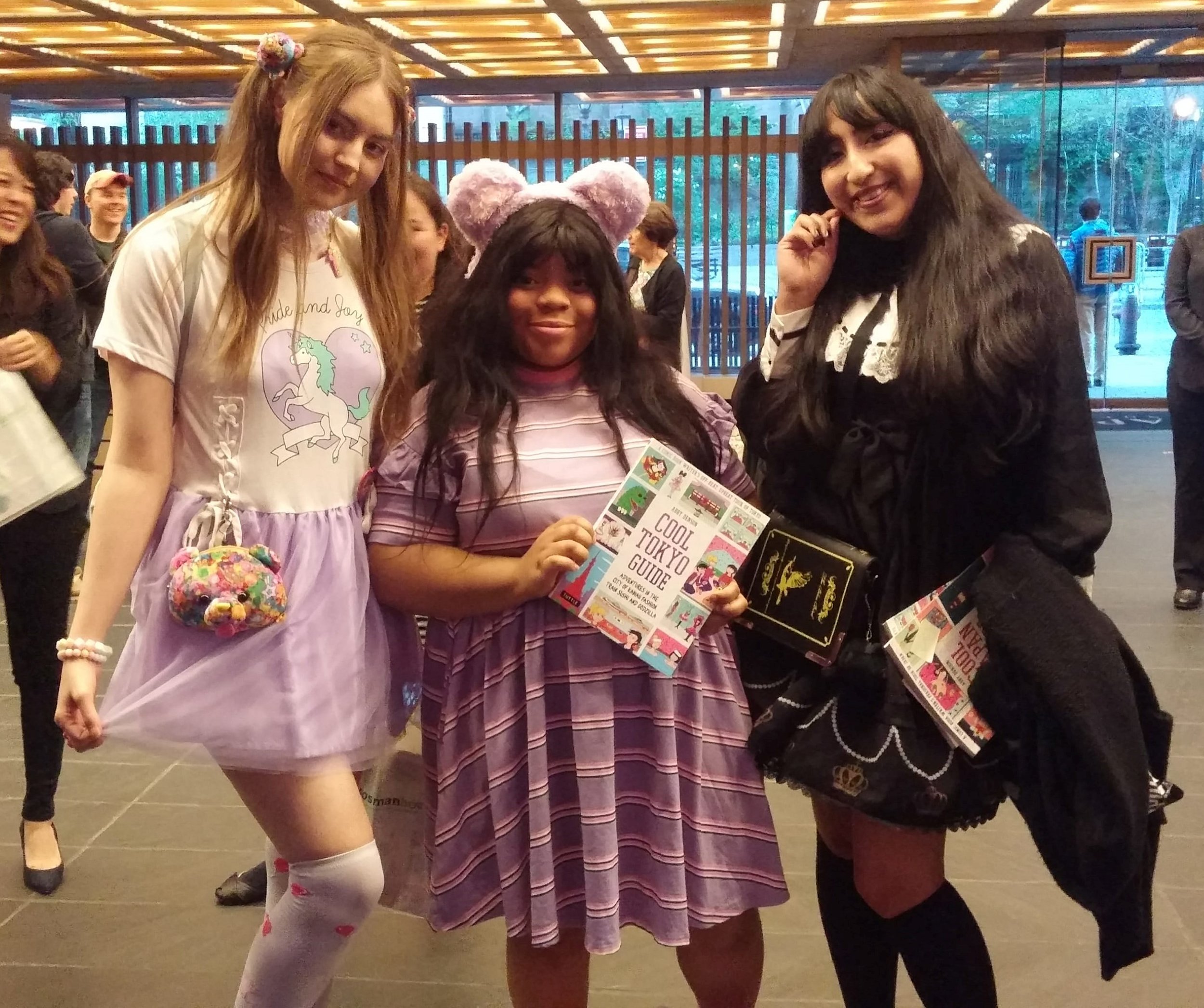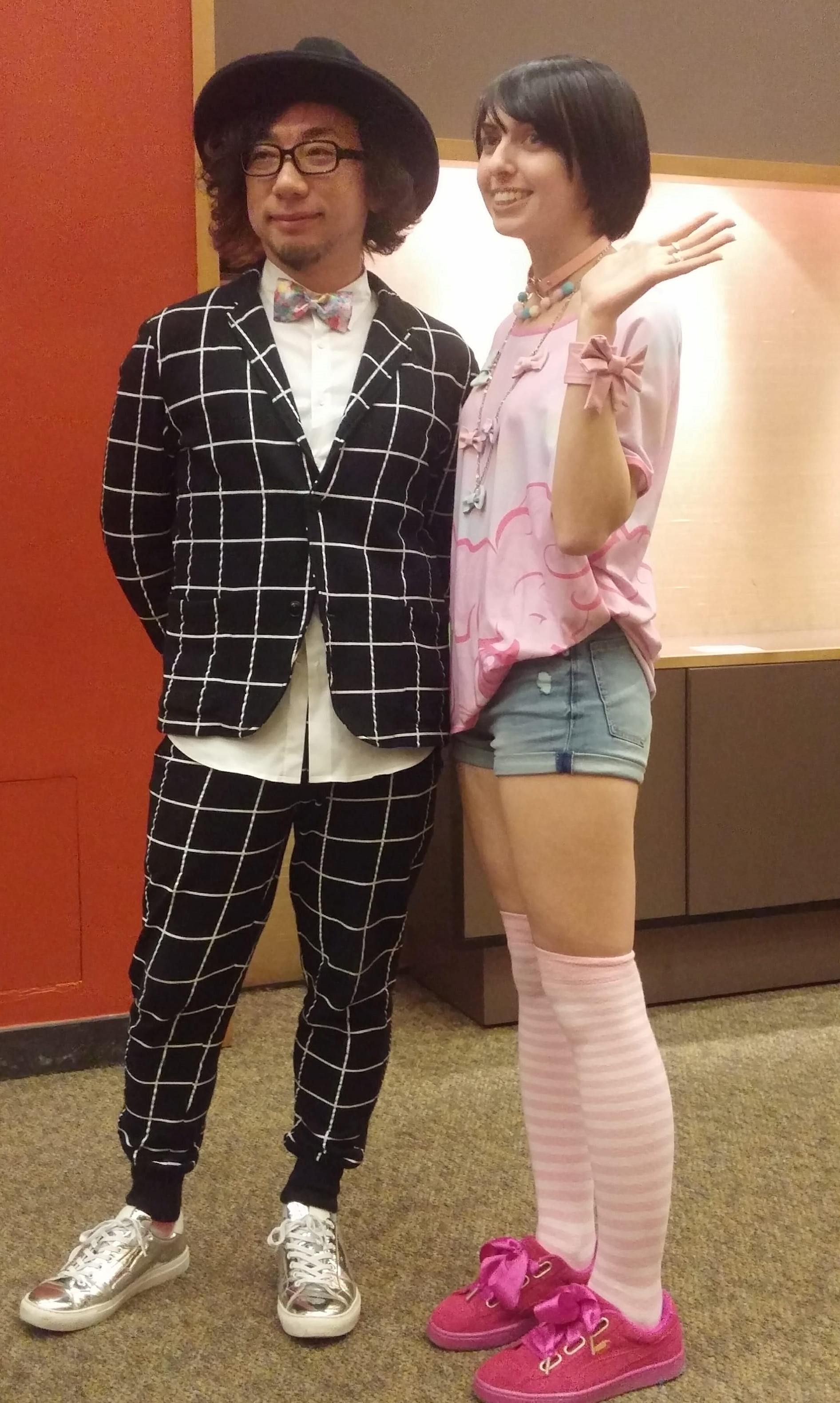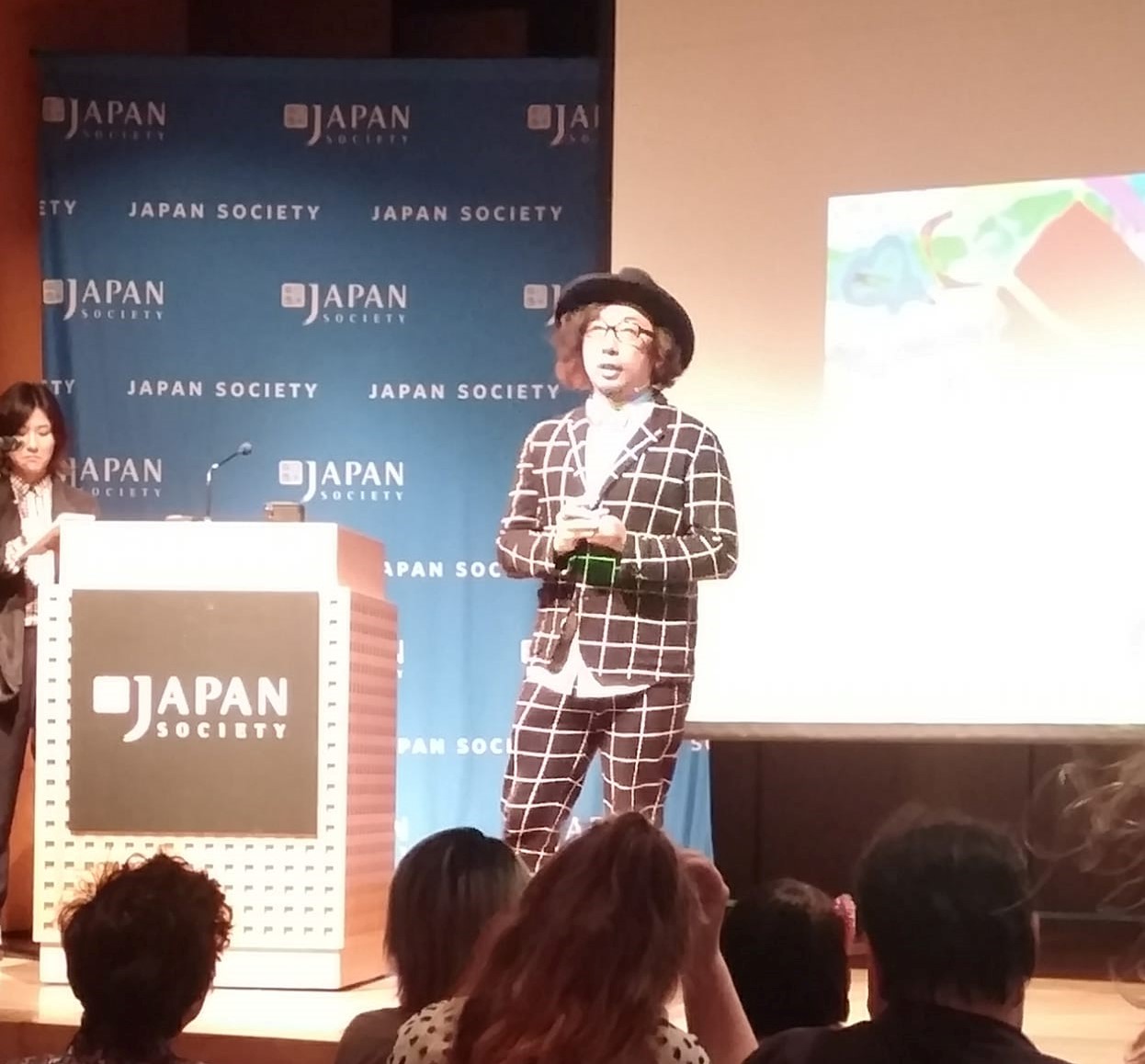Japan Society: Cool Tokyo Talk
/By Melissa Farnelli
Cool Tokyo: Harajuku, Akihabara and Beyond at Japan Society
Last week I had the pleasure of sitting in on a presentation and lecture that showcased the colorful Kawaii subculture of Japan's youth at the Japan Society. The speakers for the evening were award winning comic writer and illustrator Abby Denson, and one of the godfather's of the Harajuku art and fashion scene, Sebastian Masuda.
The first 15 minutes were devoted Denson and her book Cool Tokyo Guide which is a travel guide book written and illustrated in a comic book fashion, as it follows Denson, her husband Matt, friend Yuuko, and feline sidekick Sweet Tooth Kitty as they highlight favorite haunts in Tokyo for games, crepes, fashion, manga and more. It also gives some great tips on how to prepare for your trip (The Ghibli Museum is booked up 5 months in advance, everyone) and recommendations for places to stay. Denson was also on hand after the lecture to sign this book as well as herCool Japan Guide which gives readers a broader view of the country's offerings in the same colorful comic style. She also hopes to create a similar guide of New York City to be sold in Japan in the future.
Following Denson was artist and 6%DOKIDOKI founder Sebastian Masuda. 6%DOKIDOKI is largely considered the forerunner of the “Sensational Kawaii” cultural movement and Masuda himself as become the face and top influencer of the Harajuku scene with the success of his Kawaii Culture tours and lectures, and for his art direction on the break out success of “PON PON PON” by J pop icon Kyary Pamyu Pamyu. His artistic influence has since extended to the west through artists like Nicky Minaj, Lady Gaga, and Katy Perry. His Kawaii Monster Cafe is also one of the most the popular theme cafes in Shibuya.
He began his lecture, delivered charmingly in Japanese, with the humble beginnings of Harajuku Station as a shopping port for American soldiers stationed in the area. The access to foreign goods and oddities soon drew the attention of local youth looking for the different and unusual. It quickly grew into a place of free expression through music and counterculture, but shifted to fashion in the 1990's when the gatherings and loud music began to disrupt the local residences and businesses. Street markets with homemade clothes and accessories began to pop up and grew into the center for Japan's youth culture. Many of the audience members in attendance were colorfully and meticulously dressed in the vibrant fashions and make up you would encounter on the scene. He continued on about the growth and evolving style of the subculture, highlighting the cafe, influences in western cultural, and the future of the movement on a global scale.
Post lecture he took time to talk and pose with the many fans, many of which came from out of state and as far away as Toronto to meet their fashion idol. In closing, he spoke fondly about the Kawaii and Harajuku culture bringing worlds and people together, as aptly demonstrated at the post show reception that evening.
Overall, the evening was a good beginners guide to the Cool Tokyo Scene.

